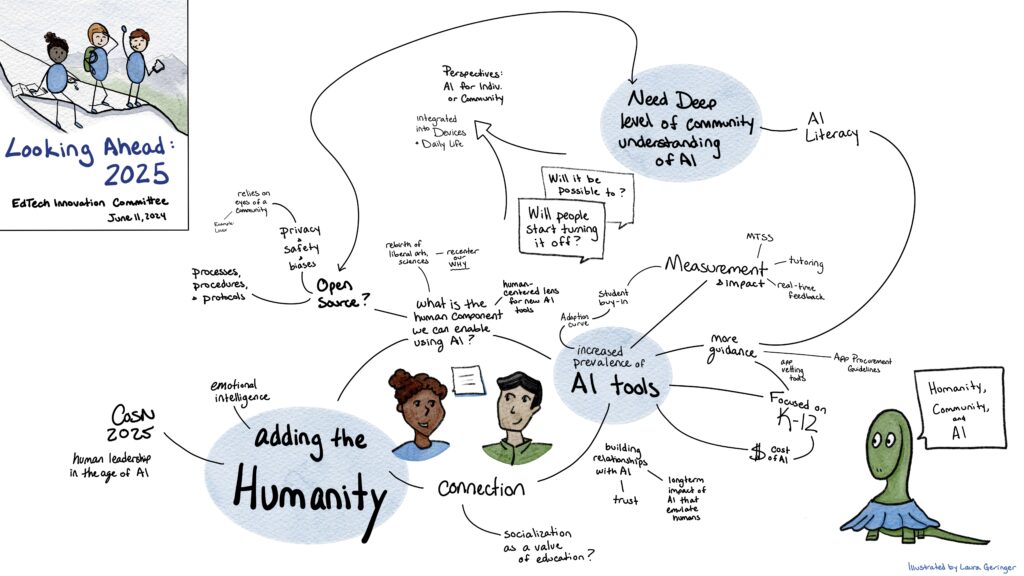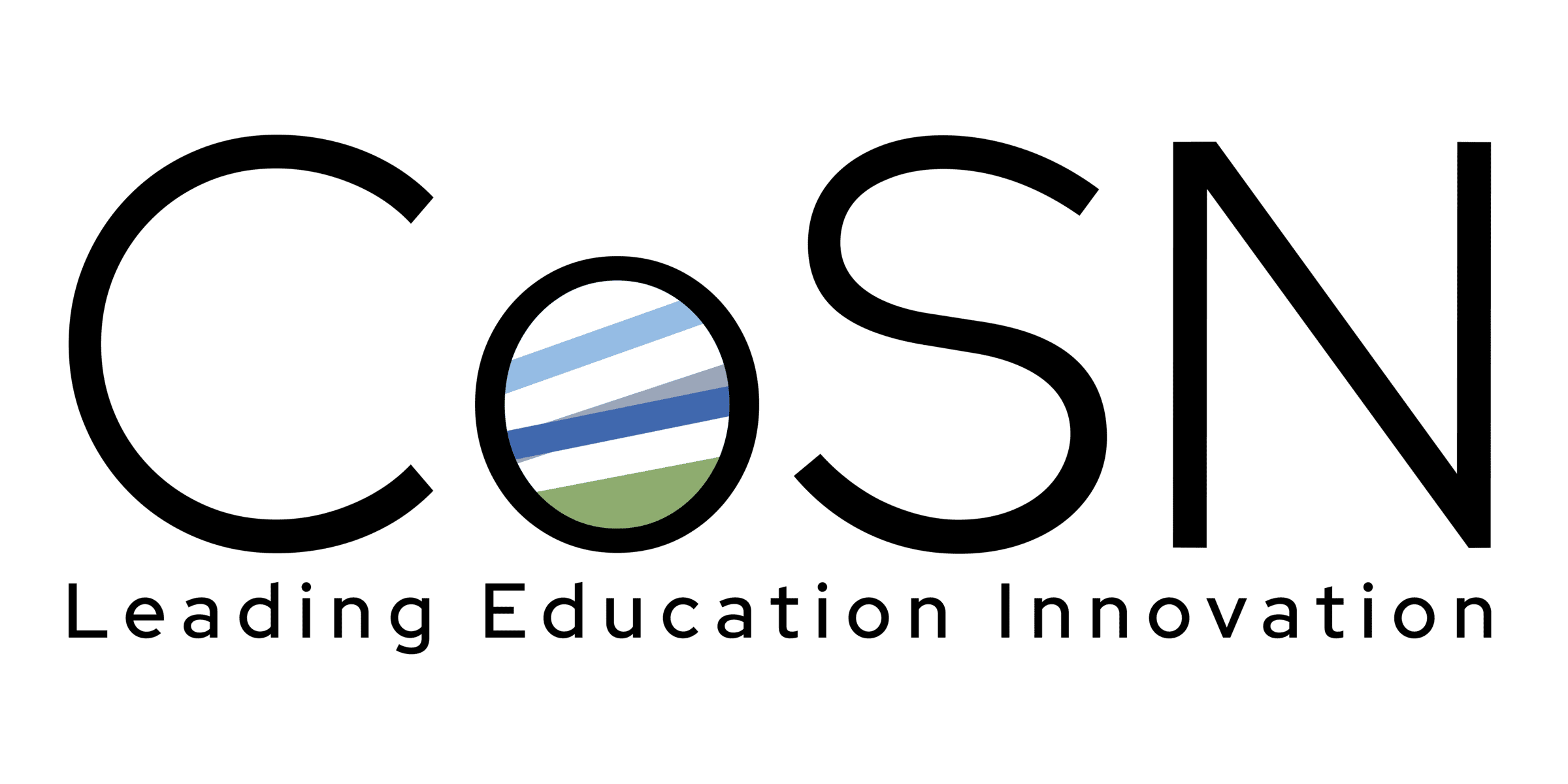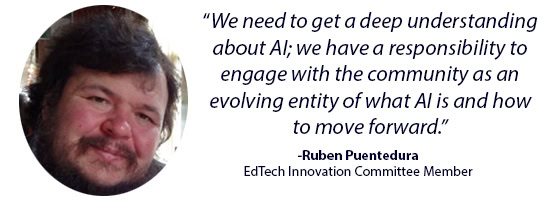Just as the end of the school year is a time for reflection, it’s also a time to brainstorm how to drive innovation in the coming year. At CoSN’s EdTech Innovation Committee meeting in June, members of the committee explored the biggest stressors and opportunities that lie ahead.
With generative artificial intelligence (Gen AI) dominating discussions this past year, read on to explore two major themes that technology experts are eager to navigate for the 2024-25 school year: what to consider when it comes to the mass adoption of Gen AI tools and remembering the human side of AI as we continue on our AI journey.
Increased Prevalence of AI Tools
In November 2023, OpenAI reported that ChatGPT had more than 100 million weekly active users, and that statistic is only growing. With Gen AI becoming more widespread in our daily lives and in schools, committee member Andy Fekete (Community Consolidated School District 93, Illinois) asked, “How can we, as a committee, use our brain power to adjust our guidance and provide more guidance to schools and families on how to navigate all of this?”
Committee member Pete Just, CETL (Consultant, Indiana) shared that he is starting to see more organizations, like Common Sense Media, focused on K-12 education and evaluating AI tools. He added that this is important, as it is “creating ways for us to determine how valuable these tools are for our area and for our needs.”
And while Gen AI use will only continue to grow, committee member Ruben Puentedura (Hippasus, Massachusetts) urged the committee to consider using Gen AI to engage even more deeply. “What can we accomplish now that we couldn’t accomplish before,” Puentedura asked.
Caring for the Human Side of Technology
During the meeting, EdTech Innovation Committee co-chair Stacy Hawthorne stressed the importance of putting humanity back into AI. She noted that it is fitting that the theme for the 2025 CoSN Conference is “Human Leadership in the World of AI.”

CoSN Board member Evangelina Mendoza (San Antonio Independent School District, Texas) agreed, mentioning that “with so many conversations happening about AI, it’s important to go back to the human element.” She gave the example of emotional intelligence vs. artificial intelligence: If you could only have one, which one would you have? If you ask AI, Mendoza said, the Gen AI would say that human connection can give you more than Gen AI can.
But when it comes to the human impact of AI on students, committee co-chair David Jarboe (D2 Harrison Schools, Colorado) shared that he wants to understand what happens when AI attempts to emulate human interaction and contact, as opposed to being a tool, like a calculator. “Young students can’t separate VR from real life,” explained Jarboe. “We need to think about protecting kids. I worry about the long-term human impact with those who have perceived relationships with AI.”
Committee member Kris Hagel (Peninsula School District, Washington) concurred, saying that people are more accustomed to communicating with AI than society may expect. According to Consumer Reports, while the greatest percentage of those surveyed (35%) used AI chatbots to answer a question (instead of a search engine), 13% of respondents said that they used AI to have a conversation with someone.
As AI tools continue to grow in popularity and usage, Puentedura explained that we need to consider how to use AI for social good. “We need to get a deep understanding about AI; we have a responsibility to engage with the community as an evolving entity of what AI is and how to move forward,” said Puentedura. AI literacy for staff and students is a great way to start.
Learn more about the EdTech Innovation Committee.
AUTHOR: Stephanie King, Writer and Communications Manager, CoSN’s EdTech Innovations Committee and Driving K-12 Innovation
Published on: July 9, 2024
CoSN is vendor neutral and does not endorse products or services. Any mention of a specific solution is for contextual purposes.



